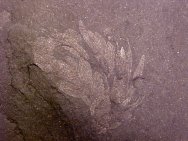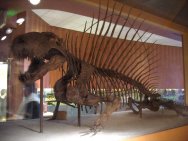DaveC426913
Valued Senior Member
Sorry, isn't the theory predicated on the Earth shrinking?Not about to have fun with PsuedoScience here.
Sorry, isn't the theory predicated on the Earth shrinking?Not about to have fun with PsuedoScience here.
Sorry, isn't the theory predicated on the Earth shrinking?
No one doubts that the proto-body that coalesced into Earth was once a diffuse mass of dust, rocks and gas. But it would be quite a stretch posit that the Earth changed size much after the end of the first era*.You mean the one from the guy I was sharing? Of course not. He eliminates it in his possibilities, though all bodies will compress and settle won't they? Rough gathering of rocks and ruble piled up till there is enough to create a molten core, taking out all the air gaps etc. That is what we say happens.
No one doubts that the proto-body that coalesced into Earth was once a diffuse mass of dust, rocks and gas. But it would be quite a stretch posit that the Earth changed size much after the end of the first era*.
Those are two very different stages.
*excluding atmospheric loss and bombardment, of course.
Anyway, I'm not really motivated to read all the chapters at the link. Not really the way we do things here. Normally, you would pick an assertion or two and argue it here, using your reference material.
Why do you assume it is no longer possible?Q) The only truly gargantuan vertebrates under our current environment remain in the ocean. What was so different, or changed to make this no longer possible?
Probably.A-1) Higher O2 levels likely helped insects and dinosaurs grow bigger.
Uh, no. Are you seriously proposing that the atmospheric pressure was higher than the pressure found on the ocean floor 1 mile down?A-2) Higher atmospheric pressure, however, is more likely to have a greater effect on both insect size and dino size. 200 Atmospheres seems to be what is required to have the desired effect to the degree it is needed.
The Cretaceous–Paleogene (K–Pg) extinction event,[a] also known as the Cretaceous–Tertiary (K–T) extinction,https://en.wikipedia.org/wiki/Cretaceous–Paleogene_extinction_event#cite_note-3 was a sudden mass extinction of some three-quarters of the plant and animal species on Earth,[2][3][4] approximately 66 million years ago.[3]
https://en.wikipedia.org/wiki/Cretaceous–Paleogene_extinction_eventWith the exception of some ectothermic species such as the leatherback sea turtle and crocodiles, no tetrapods weighing more than 25 kilograms (55 lb) survived.[5] It marked the end of the Cretaceous period and with it, the entire Mesozoic Era, opening the Cenozoic Era that continues today.
I believe this establishes a size and weight limit of surviving species after the K-T extinction.
https://en.wikipedia.org/wiki/Cretaceous–Paleogene_extinction_event
You may be too pessimistic about this.As such, this certainly explains that the entire ecosystem went through as reset, and oddly enough, dinosaurs of all sizes died out and lost to the mammal kingdom it would seem. What is odd is how even the small dinos also disappeared almost completely. Surely environmental stresses and lack of food (plant life) played a huge part in resetting the playing field. Always wondered what else might be contributing to the relative smallness of even similar species from 65 million years ago to now.

A living fossil is an extant taxon that closely resembles organisms otherwise known only from the fossil record. To be considered a living fossil, the fossil species must be old relative to the time of origin of the extant clade. Living fossils commonly are species-poor lineages, but they need not be.
Living fossils exhibit stasis over geologically long time-scales. Popular literature may wrongly claim that a "living fossil" has undergone no significant evolution since fossil times, with practically no molecular evolution or morphological changes. Scientific investigations have repeatedly discredited such claims.
The minimal superficial changes to living fossils are mistakenly declared the absence of evolution, but they are examples of stabilizing selection, which is an evolutionary process -- and perhaps the dominant process of morphological evolution.
So birds aren't just closely related to dinosaurs, they really are dinosaurs! This is what most people mean when they say that birds are reptiles, although technically according to the phylogenetic system mammals are also reptiles. You may wonder why biologists have two systems of classification.
https://askabiologist.asu.edu/questions/birds-dinosaurs-reptilesIf birds evolved from dinosaurs, would that make them reptiles too?
In this system, organisms are grouped only by their ancestry, and characteristics are only used to discover the ancestry. So a reptile is any animal descended from the original group called reptiles. Because both birds and mammals share ancestors sometimes referred to as reptiles, birds (as well as mammals) would be reptiles.
The K-T extinction event is reported to have killed all animal life over 25 kg. I am sure this is an educated guess, but may be used as a baseline.Does anyone have a plot showing the correlation of the average size of all animals on the Earth from lets say around the Paleozoic Era to present as a function of time? I looked and looked but could not find. Thanks in advance.
https://www.amnh.org/exhibitions/di...ls-new-discoveries/extinction/mass-extinctionThe Name Game
Scientists refer to the major extinction that wiped out nonavian dinosaurs as the K-T extinction, because it happened at the end of the Cretaceous period and the beginning of the Tertiary period. Why not C-T? Geologists use "K" as a shorthand for Cretaceous. "C" is shorthand for an earlier period, the Cambrian.

http://www.fossilmuseum.net/Paleobiology/Paleozoic_paleobiology.htmMost major groups of animals first appear in the fossil record, an event popularly and scientifically called the "Cambrian Explosion". The name largely derives from the hypothesized explosion of diversity of life that occurred very rapidly, but that this actually occurred is not a consensus among scientists. Darwin and others once believed that the Cambrian rocks contained the first and oldest fossil animals. We now know that these occur in the earlier Vendian strata.

The Permian Period extends from about 286 to 245 million years ago, and is the last geological period of the Palaeozoic Era. The Permian was named in the 1840s by Sir Roderick Murchison, a British geologist, from the extensive Permian exposures near Perm in Russia. The Permian ended with the most extensive extinction event recorded in paleontology: the Permian-Triassic extinction event, where some 90% to 95% of marine organisms and 70% of all terrestrial organisms became extinct.
http://www.fossilmuseum.net/Paleobiology/Paleozoic_paleobiology.htm#PermianPeriodLife on land included a diversity of plants, arthropods, amphibians and reptiles. The reptiles were mainly synapsids (Pelycosaurs and Therapsids) that appeared in the Upper Carboniferous, and were bulky, cold-blooded animals with small brains Towards the very end of the Permian the first archosaurs appear, the ancestors of the soon to follow Triassic dinosaurs. Permian marine environments were abundant in mollusks, echinoderms, and brachiopods.
It seems like you are searching for a solution to a problem that doesn't exist.Write4U,
Thanks for all the good info. I appreciate it. I have done some little bits of homework for the antithesis, and well, there are much larger mammals since the Chicxulub event that were around mush more recently. I would think the next step logically would be to further study what might be the current physical limitations in size (scale) and why. I think the limit lies somewhere between the giganatosaurusesesesese, and the giant tusked and trunked beasts that walked the Earth tens of thousands of years ago instead of tens of millions of years ago. Certainly this is a combination of physiological limitations, environment (which includes atmosphere and food supply) and also evolutionary competition. IMO. First thing is to determine the size limit under current circumstances and then make some experimental or genetic data eligible for application between species. Something like that. At any rate; thanks all for the discussion and please bring your ideas to the table by all means.
Sometimes overlooked:First thing is to determine the size limit under current circumstances and then make some experimental or genetic data eligible for application between species
It seems like you are searching for a solution to a problem that doesn't exist.
